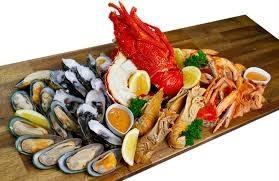Enterprises adapt quickly, seafood exports reach over 8 billion USD
Wednesday, October 8,2025
AsemconnectVietnam - The ability of enterprises to adapt quickly in the context of the world market with many potential barriers, seafood export turnover has reached 8.33 billion USD, up by 15.5% compared to 2024.
Breakthrough in many major markets
According to Ms. Le Hang, Deputy Secretary General of the Vietnam Association of Seafood Exporters and Producers (VASEP), in September of 2025, Vietnam's seafood exports reached nearly 991 million USD, up by 7.5% over the same period.
In the first 9 months, the export turnover has reached 8.33 billion USD, up by 15.5% compared to last year. This figure not only reflects the solid recovery of the seafood industry after many fluctuations, but also shows the ability of enterprises to adapt quickly in the context of the world market with many potential barriers.
In terms of product structure, shrimp is still the “champion” when it brought in nearly 410 million USD in September, bringing the total turnover in the first 9 months to more than 3.38 billion USD, up by 20.3%. The main growth driver comes from stable demand in the US, Japan, EU and increased orders in regional markets.
Pangasius also made its mark with September turnover of nearly 191 million USD, up by 11%. By the end of September, pangasius exports reached more than 1.6 billion USD, up by nearly 10% over the same period. The return of demand in China, the US and some Middle Eastern markets has contributed to strengthening the position of Vietnamese pangasius on the world seafood map.
In terms of market, China and Hong Kong continued to be bright spots. Although the figure of September decreased slightly, the figure in cumulative 9 months still increased by 32.1%, reaching 1.76 billion USD - accounting for the largest market share. This market is considered attractive thanks to abundant demand and favorable logistics costs.
The US market showed a slowdown when it decreased by more than 6% in September. However, in the first 9 months, exports to the US still reached 1.41 billion USD, up by 6.8%. Uncertainties about anti-dumping taxes and strict requirements from the Marine Mammal Protection Act made it difficult for Vietnamese enterprises to bring goods to this market.
Japan and the EU maintained a steady growth momentum. The exports to Japan reached 1.27 billion USD (+15.6%), to the EU reached 885 million USD (+13.3%). Notably, the exports to South Korea became a breakthrough market with an increase of nearly 50% in September and more than 13% in 9 months, reaching 645 million USD.
In addition, ASEAN and the Middle East also emerged as potential "doors". The exports to ASEAN reached 536 million USD (+23.3%), the Middle East nearly 295 million USD (+7.6%), September alone increased by more than 50%.
Flexible to take advantage of opportunities
According to Ms. Le Hang, behind this impressive result is the flexibility of businesses in promoting exports, taking advantage of the time before some tax policies and technical barriers are applied. Many businesses proactively restructure the market, increase exports to Asia, and at the same time consolidate their position in traditional markets.
In addition, the trend of investing in value-added processed products, meeting high requirements on quality, safety and traceability has also helped Vietnamese seafood maintain its competitiveness, especially in the mid- and high-end segments.
However, Ms. Hang said that the road ahead is not without bumps. The Vietnamese seafood industry is facing many barriers: anti-dumping tax and reciprocal tax in the US and some markets, causing profit margins to narrow.
The Marine Mammal Protection Act with its strict regulations on exploitation is putting great pressure on seafood products. In addition, the EU's IUU yellow card has not been removed, affecting the reputation and export costs of businesses.
To maintain growth momentum, experts say the seafood industry needs to focus on three main directions:
First, closely monitor market developments and trade policies to promptly adjust strategies and avoid risks when new barriers appear.
Second, restructure export markets. In addition to maintaining traditional markets such as the US, EU, and Japan, businesses need to promote the exploitation of opportunities in ASEAN, the Middle East, and less competitive niche markets.
Third, diversify products and increase added value. This is a key factor to help Vietnamese seafood compete sustainably, especially when global consumers increasingly prioritize high-quality, sustainable, and safe products.
Along with that, the industry also needs to promote innovation and apply technology in farming and processing, while enhancing the national brand through high-end culinary channels and e-commerce.
CK
Source: VITIC/haiquanonline.com.vn
Vietnam and Sweden trade grow strongly thanks to EVFTA
Morning digest on October 7
Vietnam had a trade surplus with German market
Vietnam’s coffee exports in 9 months far exceed 2024 record
Wood and wood products exports maintain leading role in agriculture
Support models for taking advantage of FTAs in the world and lessons for Vietnam
Great opportunity for Vietnamese seafood exports to Taiwan
Vietnam - Germany trade in first 8 months of 2025
Vietnam’s textile and apparel exports to the EU: Sustained expansion supported by the EVFTA
Vietnam’s fruit and vegetable exports to the EU: Positive growth driven by EVFTA
Vietnam's seafood exports to the EU have increased sharply thanks to EVFTA
Vietnam–Portugal trade grows strongly thanks to the EVFTA
Vietnam–Netherlands trade exchange grows positively thanks to EVFTA
Imports and exports decreased in first half of September

Plan of Hai Duong province for a period of 2021 - 2030, ...
Organize space reasonably and harmoniously, focusing on connecting Hai Duong in common development space, actively contributing to the ...Plan of Hau Giang province in a period of 2021 - 2030, ...
Sustainable forestry development program in a period of ...

LION Championship 25 to feature title showdowns in Khanh ...
LION Championship 25 will take place at Cam Ranh Square in south-central Khanh Hoa province, at 20:00 on August 16, featuring two of the ...Bai Dinh Pagoda named outstanding destination with ...
Party chief attends special political–art programme “Under ...



